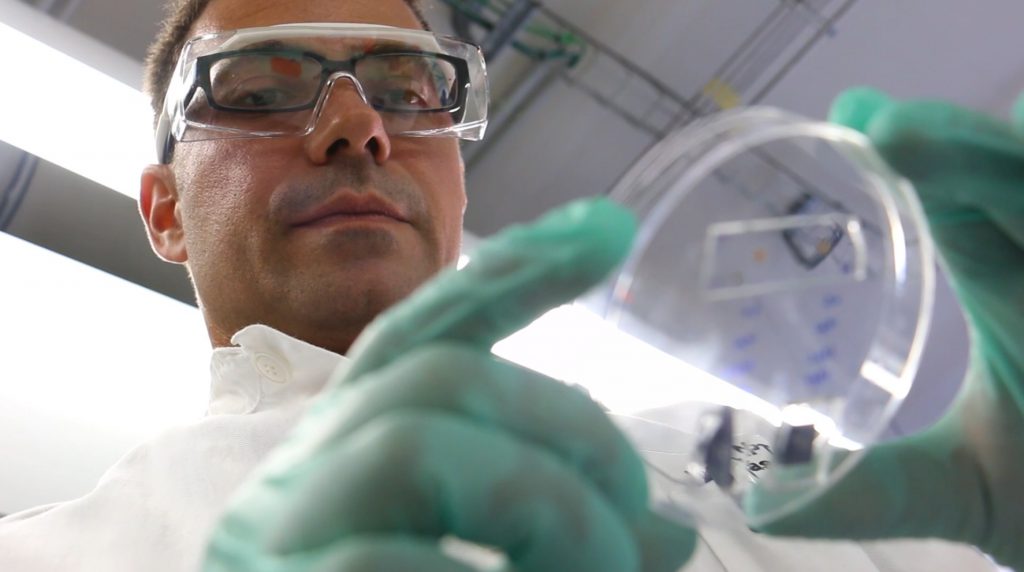03/12/2018 Interview
Nicolás Pazos, Ramón y Cajal researcher for the Zeptonic research group
“We are developing nanosensors that can diagnose diseases and environmental pollutants”

The researcher Nicolás Pazos develops plasmonic nanomaterials that fit into sensors of various shapes and sizes. These could help diagnose different illnesses such as cancer
Cancer is a devastating disease and one of the principal challenges facing medical science.
How can nanosensors help in the fight against cancer?
They could help in the detection of tumours, among other things. This would enable them to be treated less aggressively and reduce mortality.
What does your research involve?
Our research group is made up of experts in different areas who develop nanosensors for different types of detection, from environmental pollutants to illnesses such as cancer. In the latter instance, we have developed a sensor that can detect a gene that is overexpressed in a very high percentage of human cancers.
How does this sensor work?
When a blood sample is combined with a liquid solution of the plasmonic material that we create in the laboratory, it changes the vibrations and rotations of the molecules that have been designed and placed on the surface of the nanomaterials. These modifications can be detected using a Raman spectroscope, a photonic technique that provides chemical and structural information in only a few seconds.
What is the key to these materials?
One of the keys to applying these sensors is Raman spectroscopy, which in combination with plasmonic materials, provides a technique known as surface-enhanced Raman spectroscopy, which can take extremely quick and highly sensitive measurements. Another key to these materials is that the molecule that we want to analyse is on the surface of our nanoparticles. Therefore, after making the plasmonic nanoparticles, we need to functionalise them with a material that is selective for the specific sensor that we want to make.
How has this field evolved since you started your research career fifteen years ago?
Fifteen years ago, nanomaterials were like something out of science fiction. Nowadays research has led to their use in specific technological applications. In fact, our research group has also designed another material that can detect in minutes bacterial infections such as Escherichia coli. This saves having to wait for days for laboratory cultures to determine which is the best antibiotic to treat an infection.
What does this technology that you have developed promise for the future?
The sensors that we are developing will be able to change the way we detect different environmental contaminants or diagnose different illnesses because the technology is highly accurate, quick and cheap.
Science in 1 minute: What are nanomaterials and what can they be used for?
More news about: nanomaterials, Talent URV, URV Talent
